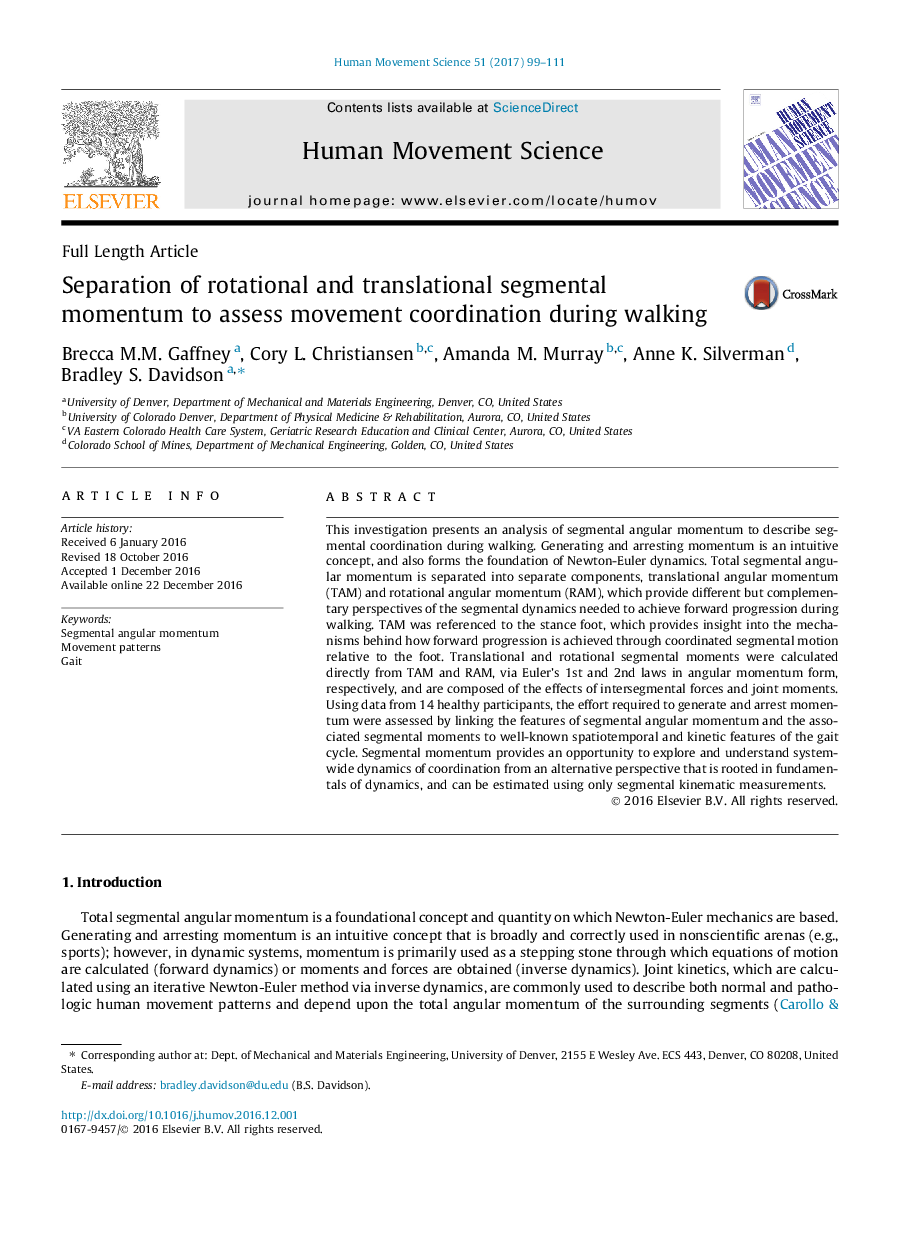| Article ID | Journal | Published Year | Pages | File Type |
|---|---|---|---|---|
| 5042026 | Human Movement Science | 2017 | 13 Pages |
â¢Segmental angular momentum components demonstrate coordinated movement patterns.â¢Euler's rotational laws describe underlying segmental kinetics that cause motion.â¢Generating and arresting momentum is indicator of musculoskeletal effort and demand.
This investigation presents an analysis of segmental angular momentum to describe segmental coordination during walking. Generating and arresting momentum is an intuitive concept, and also forms the foundation of Newton-Euler dynamics. Total segmental angular momentum is separated into separate components, translational angular momentum (TAM) and rotational angular momentum (RAM), which provide different but complementary perspectives of the segmental dynamics needed to achieve forward progression during walking. TAM was referenced to the stance foot, which provides insight into the mechanisms behind how forward progression is achieved through coordinated segmental motion relative to the foot. Translational and rotational segmental moments were calculated directly from TAM and RAM, via Euler's 1st and 2nd laws in angular momentum form, respectively, and are composed of the effects of intersegmental forces and joint moments. Using data from 14 healthy participants, the effort required to generate and arrest momentum were assessed by linking the features of segmental angular momentum and the associated segmental moments to well-known spatiotemporal and kinetic features of the gait cycle. Segmental momentum provides an opportunity to explore and understand system-wide dynamics of coordination from an alternative perspective that is rooted in fundamentals of dynamics, and can be estimated using only segmental kinematic measurements.
